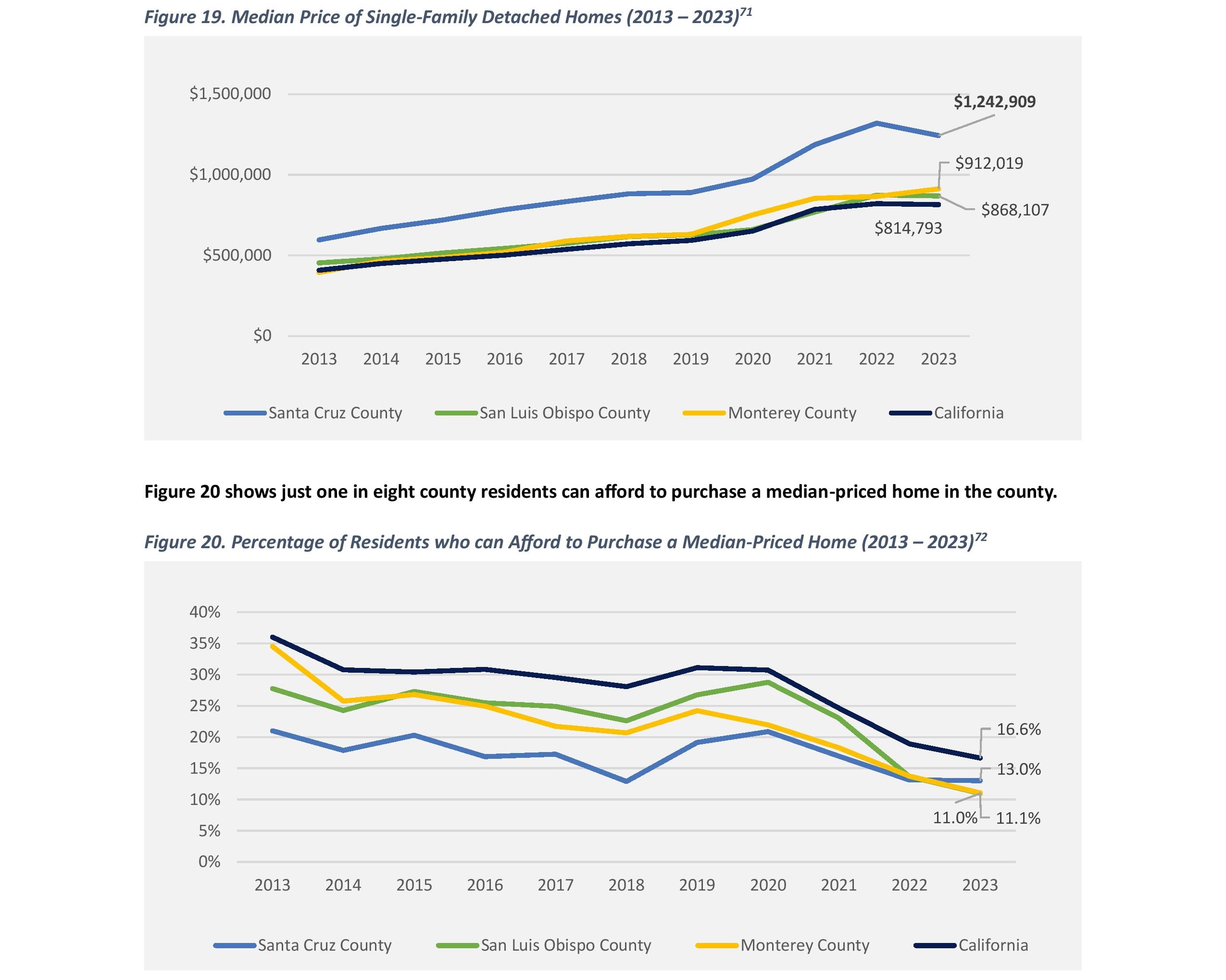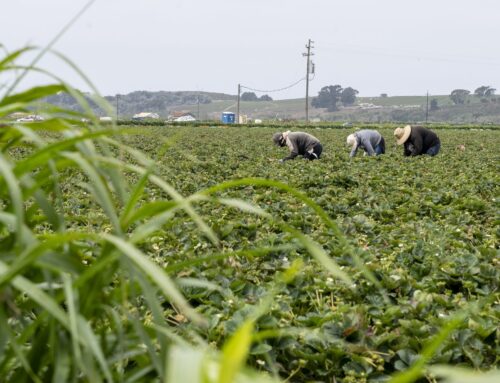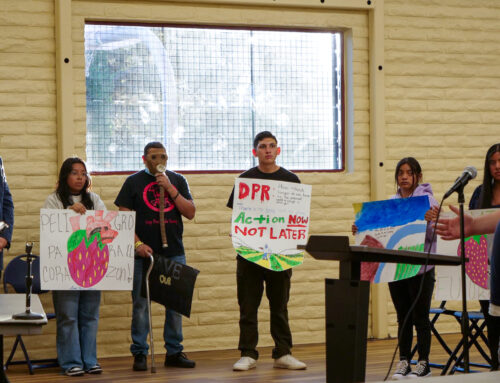
Santa Cruz County’s population has declined since 2017, and industries like health care are growing in part because of an aging population. (BW Research Partnership)
SANTA CRUZ >> Santa Cruz County’s job growth has rebounded from the pandemic slower than the state average, and new jobs in the county were led by emerging industries in biotechnology, transportation and manufacturing, according to a 2024 State of the Workforce report released this week.
The County of Santa Cruz’s Workforce Development Board tracks economic and demographic trends in the county to try to connect “all corners of our community,” wrote Andy Stone, director of the Workforce Development Board. The report “sheds light on the jobs scene, unpacks the trends shaping our industries and highlights the incredible work done to prepare our workforce for the future,” Stone wrote.
Core regional industries like health care, tourism, agriculture and education account for 6 in 10 jobs in the county. Those four industries had mixed job growth from 2020 to 2023, and agriculture reported the most job losses.
Key takeaways
- The health care industry is expected to grow in part because Santa Cruz County’s population is trending older. Residents aged 60 and older increased by nearly 50% from 2010 to 2023. By 2030, about 30% of the county’s population is expected to be 60 or older. “The aging of the county’s population poses significant challenges for the county’s economy and workforce in the years to come. It may contribute to potential shortages of skilled workers in the future,” the report stated.
- The county’s population has declined since about 2017 and is now roughly 261,000 people, according to Census data. Nearly 8,200 residents left Santa Cruz County from 2020 to 2021, representing a 3% population decline. After a small gain in 2022, it declined by 2,300 people in 2023.
- Housing costs have risen faster in Santa Cruz County than the California average. About 13% of county residents can afford a median-priced home in Santa Cruz County, and that percentage has declined sharply in the past three years, according to the report.
- Remote work in the county more than doubled from 2018 to 2022, increasing to nearly 16% from 7.6 percent. Nearly 1 in 5 North Santa Cruz County residents worked from home in 2022. The county’s average annual wage was $69,700 in 2023.
- “The cost of living in the county exceeds the county’s average annual wages,” the report stated. “In county households with two working adults and two children, each adult must earn $86,778 to meet the MIT Living Wage definition.” For workers in lower-paid positions like food service, retail or caregiving, that’s the equivalent of working 1.8 full-time jobs.

Median home prices have risen and the share of residents who can afford those homes has fallen in Santa Cruz County. (Santa Cruz County Workforce Development Board, California Association of Realtors)
Workforce and housing trends
The report identified nonprofit organizations as a significant source of employment. However, nonprofit jobs in the county grew modestly in the past five years, excluding religious organizations.
Wages have not kept pace with the cost of living in the county, mainly because of housing costs. Some other Central Coast counties are worse off.
- 1 in 8 county residents can afford to buy a median-priced home in Santa Cruz County, according to the report.
- 1 in 9 San Luis Obispo and Monterey county residents can afford to buy a median priced home.
- 1 in 6 California residents can afford to buy a median-priced home.
Potential solutions
“We’ve provided suggestions on how everyone can contribute to nurturing our workforce. Whether through cutting-edge educational programs, thoughtful policy tweaks, or grassroots efforts, everyone can play a part,” Stone wrote.
- Communicate career pathways and industries with significant growth opportunities, such as the emerging, high-paying fields of health care, biotech, defense, aerospace, transportation and manufacturing. “Demand for workers is expected to spike as the growing aging population drives a surge in demand for geriatric care. Increasing awareness amongst local job seekers can boost retention in these key industries,” according to the report.
- “Highlight the valuable contributions to workforce development that the nonprofit sector makes within Santa Cruz County. For example, Santa Cruz Works — a tech-focused nonprofit — has assisted jobseekers with over 5,000 job placements since 2008,” the report stated. It has hosted more than 400 events related to skill building and entrepreneurship.
- Expand partnerships with key local nonprofits to ensure that job seekers have access to affordable housing, transportation and other needs.
- Support education programs so vulnerable groups can access the skills they need to find living-wage jobs. Skills include basic digital literacy, English as a second language, effective communication and leadership. The report recommended support for nonprofits that can provide help.
“We see signs of optimism in emerging sectors, but this report highlights some of the challenges our workforce faces when it comes to job quality and their ability to live and raise families locally,” Stone said.
“Declining population numbers should serve as a call to action to address these challenges head on.”
Questions or comments? Email [email protected]. Santa Cruz Local is supported by members, major donors, sponsors and grants for the general support of our newsroom. Our news judgments are made independently and not on the basis of donor support. Learn more about Santa Cruz Local and how we are funded.
Stephen Baxter is a co-founder and editor of Santa Cruz Local. He covers Santa Cruz County government.





